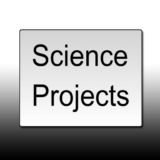Home »
Posts tagged "Science Projects" (Page 3)
Distance and Size Materials Required: A full moon evening Some coins A Street with telephone poles A measuring stick With a diameter of 865,000 miles, it is very evident that the sun is very big. The moon on the other hand, with a diameter of only 2,160 miles is rather small. An eclipse is caused when the moon’s path, brings it between the sun and the earth. The sun is blocked...
Continue reading »
July 23, 2020 evirtualguru_ajaygourScience ProjectsNo Comment
Bending the Light Materials Required: A small steel ball bearing A strong magnet A flat table Something that causes a change in something else is known as a Force. Gravity is a force which stops us from moving upwards. Larger objects have greater gravity and this is why the Sun’s gravity forces the planets to remain stuck to it. Similarly, the moon too exerts its gravitational pull on the Earth and...
Continue reading »
July 23, 2020 evirtualguru_ajaygourScience ProjectsNo Comment
A Mask That Moves Materials Required: A Party mask Paints A lamp or any other source of light Scare the wits out of your friend. Use a Party Mask to create a scary optical illusion. Use crayons, water colours or other hues of paints to colour the lips red, cheeks pink and eyes blue. Darken the eyebrows. Hang the mask on the wall, painted side out. Direct light at it, from...
Continue reading »
July 23, 2020 evirtualguru_ajaygourScience ProjectsNo Comment
Effects of Friction Materials Required: Paper and Pencil Erosion is caused by moving water, glacier and winds. Apart from it, things can be worn out by friction force too. When you rub two materials against each other, the traction from it can wear them out. Look around you to find some proof of wear and tear. Make a chart of things in your neighbourhood or school and find the cause of...
Continue reading »
July 23, 2020 evirtualguru_ajaygourScience ProjectsNo Comment
Understanding Trajectories Materials Required: Some modelling clay A paper towel roll tube Marble Several sheets of typing paper Some adhesive tape A pencil A cardboard An uncarpeted floor under the table The path that an object takes as it travels through air is known as its Trajectory. Due to the earth’s gravity, objects that are thrown will never go straight, but will rather fall to the ground. If you throw it...
Continue reading »
July 23, 2020 evirtualguru_ajaygourScience ProjectsNo Comment
Understanding Friction Materials Required: Clear plastic food wrap Adhesive tape Water Cardboard, of about.1 square foot) A ruler Pencil and paper Soap Friction is a process which is caused by two objects rubbing against each other and therefore it is a very convenient way to act on a moving object, to slow it down. To practically check the effect of friction and its qualities, cover the cardboard that you have, with...
Continue reading »
July 23, 2020 evirtualguru_ajaygourScience ProjectsNo Comment
Understanding Aerodynamics Materials Required: A sheet of typing paper A piece of wax paper A piece of aluminium foil Paper clips Tacky clay It is common knowledge that the objective in making a paper airplane is to see how long it remains in the air, before the force of gravity can pull it down. Several factors can determine the ‘flight time’ of the plane, like the shape of the wings or...
Continue reading »
July 23, 2020 evirtualguru_ajaygourScience ProjectsNo Comment
Transfer of Energy Materials Required: A section of wood, measuring about 10 cm wide and about 60 cm long Five coins A small coin Two nails A hammer A small rubber band Stapler A thin cardboard Scissors Some smooth paper Sir Isaac Newton, an eminent scientist, who was born in the year 1642 in England, had formulated his set of laws on motion. The first law from the set states that...
Continue reading »
July 23, 2020 evirtualguru_ajaygourScience ProjectsNo Comment
Page 3 of 23« Prev
1
2
3
4
5
6
…
23
Next »























